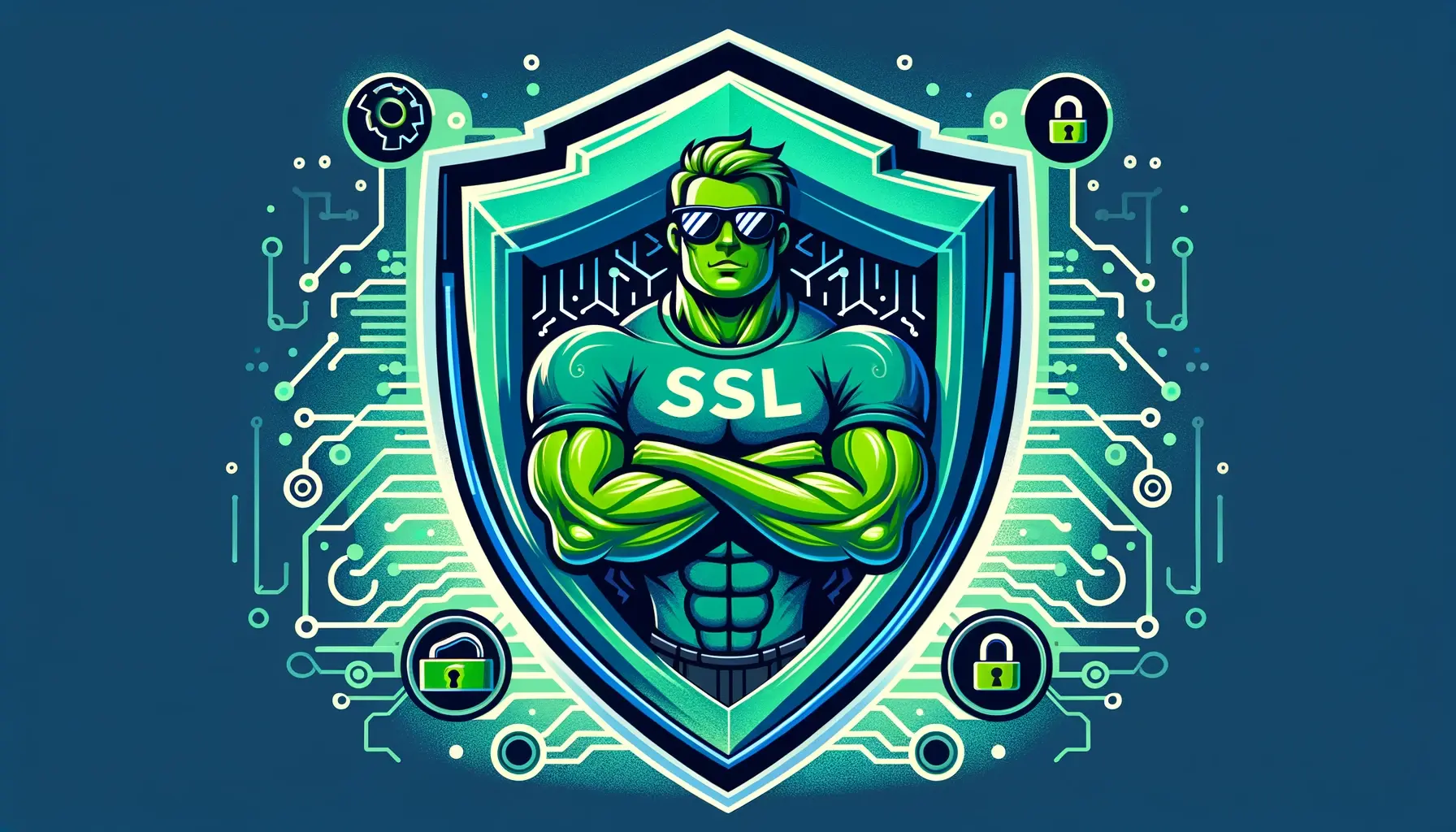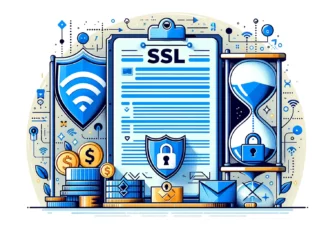
If you browse the web frequently (and who doesn’t these days?), chances are you’ve seen the SSL/TLS acronyms more than once. You may even know they’re related to web security and data protection. But what is SSL? And how does it secure sensitive information online?
This article provides the answers, including tips on how to get an SSL certificate. It also features a glossary of terms related to SSL and TLS, so you can quickly learn about data encryption in greater detail. Let’s kick things off with the TLS/SSL definition.
Table of Contents
- What is SSL/TLS?
- How Does SSL Work?
- Why Do You Need SSL?
- What is an SSL Certificate?
- How Do SSL Certificates Work?
- How to Get an SSL Certificate?
- How to Add an SSL Certificate to Your Website?
- SSL Glossary
What is SSL/TLS?
SSL/TLS, which stands for Secure Sockets Layer/Transport Layer Security, are cryptographic protocols that secure connections between a client and a web server. While SSL is now deprecated due to security vulnerabilities, TLS has become the standard protocol for ensuring data integrity, confidentiality, and authentication over the internet. The acronyms, however, remain interchangeable.
SSL certificates facilitate secure communication by authenticating the server’s identity and establishing encrypted channels. These channels protect sensitive information such as credit card numbers, login credentials, and personal messages from unauthorized access or tampering.
How Does SSL Work?
Alright, let’s take a journey into the world of secure communication on the web, enabled by the SSL protocol. Imagine you’re about to buy something online, maybe a new pair of shoes. You reach the checkout page and notice a padlock icon next to the website URL. That little padlock is your assurance that the connection between your device and the website is secure.
So, how does it work? It starts with SSL certificates, which are like digital passports. Websites obtain these certificates from a trusted entity called a certificate authority. When you visit a secure website, your browser checks this certificate. It’s like your browser asking, “Hey, are you who you say you are?” If the certificate is valid and trustworthy, your browser connects securely.
Now, let’s talk about encryption. When you send your payment information, it’s like sealing it in a locked box before sending it off. Here’s where SSL encryption comes into play. Your info gets encrypted before it travels across the internet, making it unreadable to anyone who might intercept it.
Your encrypted data arrives safely at the website’s server, where it is decrypted using a cryptographic key. Once the website has your information, it can process your payment securely.
Throughout this process, from the moment you hit “checkout” to the completion of your transaction, you’re benefiting from an encrypted connection. And that, in a nutshell, is how SSL/TLS works to keep your online transactions secure and your data safe.
What is HTTPS?
HTTPS stands for Hypertext Transfer Protocol Secure. It is an extension of the HTTP protocol for secure communication over a computer network.
When you visit a HTTPS website, the connection between your browser and the website’s server is encrypted. This encryption is made possible through the Secure Sockets Layer (SSL) and Transport Layer Security (TLS) technologies, which ensure that any data exchanged between your browser and the website remains private and secure from potential eavesdroppers.
When you type a website’s address into your browser’s address bar and see “https://” at the beginning of the URL, along with a padlock symbol, it indicates the connection is secure. Web browsers typically display a padlock icon or an info button to signal that you’re on a secure site.
SSL/TLS Encryption and Keys
When you connect to a website using HTTPS, your browser and the server go through the TLS/SSL handshake to establish a secure connection. This handshake involves several steps:
- Public Key Exchange: The server sends its public key to your browser to encrypt data.
- Symmetric Session Key Generation: Your browser generates a unique symmetric session key for this browsing session. This key will encrypt and decrypt data during the session.
- Public Key Encryption: Your browser encrypts the symmetric session key with the server’s public key and sends it back to the server. This way, only the server can decrypt the session key.
- Session Key Decryption: Once the server receives the encrypted session key, it decrypts it using its private key. Both your browser and the server now have the same symmetric session key.
- Encrypted Session: With the symmetric session key established, both the browser and the server use it to encrypt and decrypt data exchanged during the session.
This entire process is called Public Key Cryptography, where the encryption and decryption keys are different (public and private keys), and only the recipient with the corresponding private key can decrypt the encrypted data.
Why Do You Need SSL?
Here are a few benefits of using SSL for internet security:
- Encryption: SSL ensures that data transmitted between web servers and browsers is encrypted, preventing unauthorized access to sensitive information such as passwords and credit card details.
- Authentication: TLS certificates verify the authenticity of web servers, assuring users that they are communicating with legitimate websites and not impostors.
- Data Integrity: SSL/TLS maintains data integrity during transmission by detecting tampering attempts.
- Mandatory Requirement: Failure to implement SSL will result in browsers flagging the site as insecure, which can deter users from accessing it and harm the site’s reputation and credibility.
What is an SSL Certificate?
An SSL certificate is a digital certificate that authenticates a website’s identity and enables secure, encrypted communication between a user’s web browser and the website’s server. It serves as a trust indicator, assuring users that their sensitive information, such as personal data or financial details, transmitted over the Internet remains private and protected from unauthorized access.
Types of SSL Certificates
SSL certificates come in various types, fulfilling different needs and validation requirements. Each offers a distinct level of security and flexibility from single-domain to multi-domain and wildcard certificates. The validation process — DV, OV, or EV — determines the extent of verification and trust associated with the certificate.
Validation Types
- Domain Validation (DV): This type verifies ownership of a domain. It’s quick and basic, suitable for personal websites.
- Organization Validation (OV): OV certificates confirm a company’s legal status. They offer a higher level of trust than DV certificates, which display organization details in the certificate.
- Extended Validation (EV): An EV SSL certificate undergoes rigorous validation, verifying the requesting entity’s identity and legal credentials. Although it no longer enables the green address bar, an EV cert represents the highest level of assurance for users.
SSL Certificate Types
- Single Domain SSL Certificates: These secure a single domain name, available with DV, OV, or EV validation.
- Multi-Domain SSL Certificates: Also called Unified Communications Certificates (UCC) or Subject Alternative Name (SAN) certificates, these cover multiple domain names under one certificate. They’re ideal for organizations managing several websites.
- Wildcard SSL Certificates: These secure a domain and its subdomains with one certificate. They’re cost-effective solutions for managing numerous subdomains.
- Multi-Domain Wildcard: The most versatile SSL certificate, capable of securing multiple domain names and unlimited subdomains under a single installation.
How Do SSL Certificates Work?
As you already know, when you visit a website, your browser and the website’s server communicate to establish a secure connection using the SSL/TLS protocol. SSL certificates play a crucial role by verifying the website’s identity and encrypting the data exchanged between your browser and the server.
When a website wants to use SSL encryption, it must obtain an SSL certificate from a Certificate Authority. The CA verifies who owns the website to ensure they are who they claim to be. This verification process requires confirming ownership of the domain.
Once the website’s identity is confirmed, the SSL certificate is installed on the server. When you visit the website, your browser requests the SSL certificate, which the website’s server then sends to your browser.
Your browser checks the SSL certificate to ensure it’s valid and issued by a trusted CA. If everything looks good, your browser and the server establish a secure connection.
The SSL cert encrypts all data exchanged between your browser and the server. So even if someone intercepts it, they won’t be able to understand it because it’s scrambled.
How to Get an SSL Certificate?
The best and quickest way to get an SSL certificate is from a certified SSL reseller like SSL Dragon. We offer cheap SSL certificates for every need. All you have to do is determine what kind of cert your website requires.
If you’re unsure, our SSL Wizzard can help you choose the optimal solution for your project and budget. Once you’ve selected the certificate, our intuitive website will guide you through the buying process.
Buy from us, and you’ll get the best price on the market, along with regular discounts and multi-year subscriptions that drive the price down even further.
How to Add an SSL Certificate to Your Website?
After you buy an SSL certificate, the certificate authority will send the necessary SSL files to your email. You must download the archived folder and extract its contents on your local device. Here’s where things can get tricky. SSL files come in different formats, and the installation steps vary from server to server.
If you’re not familiar with the whole process, you may struggle to install the cert and activate HTTPS. However, there’s good news. We’ve written beginner-friendly SSL installation tutorials that will show you step-by-step how to do it. Just pick your server and follow the instructions.
SSL Glossary
By exploring TLS/SSL certificates and protocols, we’ve only scratched the surface of the Public Key Infrastructure – the architecture that governs the rules and workings of online data encryption. Below, you’ll find a glossary of terms related to SSL and TLS.
256-bit Encryption: A cryptographic method where data is encoded using a 256-bit key, providing high security by making it extremely difficult for unauthorized parties to decrypt the information without the key.
Asymmetric Cryptography: A cryptographic system that uses pairs of keys (public and private) to encrypt and decrypt data, providing secure communication between parties without the need to share a secret key.
Certificate Signing Request (CSR): A file generated by a requester to apply for a digital certificate containing information about the entity requesting the certificate and the desired details for the certificate itself.
Certificate Authority (CA): A trusted entity responsible for issuing digital certificates, validating the certificate holder’s identity, and digitally signing certificates to confirm their authenticity.
Cipher Suite: A set of cryptographic algorithms used to secure network communication by determining the encryption, authentication, and key exchange methods to be employed.
Domain Validation SSL Certificates: SSL certificates that verify the domain ownership of a website, offering basic encryption and validation without extensive identity verification.
Encryption: The process of converting plain text or data into ciphertext using cryptographic techniques to prevent unauthorized access or data interception.
Extended Validation SSL Certificates: Digital certificates that verify the legal identity and legitimacy of the entity owning the website, providing the highest level of trust and security for users.
Multi-Domain Validation: SSL certificates that can secure multiple domains or subdomains within a single certificate, simplifying certificate management and providing flexibility for securing diverse web properties.
Organization Validation SSL Certificates: Digital certificates that validate the website owner’s legal entity and organizational details, offering a higher level of trust and security than domain validation certificates.
Public Key Infrastructure (PKI): A framework of hardware, software, policies, and procedures used to manage digital certificates and public-private key pairs, enabling secure communication and authentication over a network.
SAN SSL Certificates: SSL certificates that support Subject Alternative Names (SANs), allowing secure encryption for multiple domain names or subdomains within a single certificate.
Single-Domain Validation: SSL certificates that validate the ownership of a single domain name, providing basic encryption and assurance of domain ownership.
Symmetric Encryption: A cryptographic technique where the same key is used for both data encryption and decryption, offering fast and efficient encryption for large volumes of data.
Wildcard SSL Certificates: Digital certificates that secure a domain and its subdomains with a single certificate, using a wildcard character (*) to cover all subdomains under the specified domain.
Save 10% on SSL Certificates when ordering today!
Fast issuance, strong encryption, 99.99% browser trust, dedicated support, and 25-day money-back guarantee. Coupon code: SAVE10



























